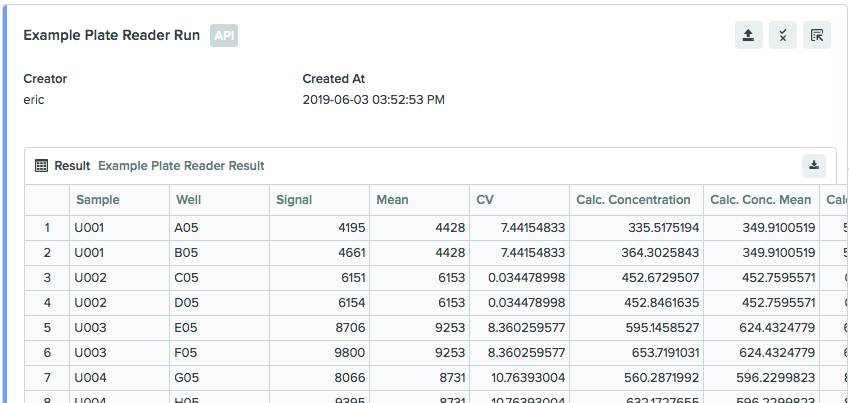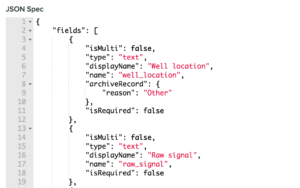Benchling Product Release Newsletter: June 2019
Welcome to the first product release newsletter! Starting this month we will be doing a monthly release newsletter informing you of all the cool new features and updates that were released over the month.
Here are some of the key features released in June 2019.
Code example: Results upload into Benchling
To make it easier for our customers and third-party developers to understand and use our APIs, we are creating a series of sample code integrations. These code examples will showcase the potential of Benchling APIs and serve as examples for customers to create their own integrations.
The code example featured this month allows users to upload results from a .csv file into Benchling. Once uploaded, the results can be downloaded into a Results table in a Notebook entry. This API integration allows the import of large amounts of results from a variety of instruments. It keeps the results in a structured format which can then be leveraged across the Benchling platform through other applications such as the Notebook, Registry, and Requests. Follow this guide for the step-by-step instructions.

Creating entities directly in Registry
The sample registration process is now easier and more intuitive than before. Users can directly create entities in the Registry without the need for creating the samples in a project first before registering. This helps streamline your experimental workflows and improves compliance with timely registration of entities.

Archiving schema fields
Archival of unused or outdated schema fields is now a breeze and can be accomplished by the Org Admins without seeking help from Benchling Customer Success. Whether it is a Run / Results schema field or a Request / Task schema field that is obsolete, follow along the simple instructions in JSON configuration to get going.

User provisioning tool
Admins now have access to a brand new tool that allows you to create users and assign users to the appropriate team or project right on Benchling. This handy feature can be used to manage large number of user accounts at once and provides superior access controls to any enterprise organization.
